A capillary tube (A) is dipped in water. Another identical tube (B) is dipped in a soap-water solution. Which of the following shows the relative nature of the liquid columns in the two tubes?

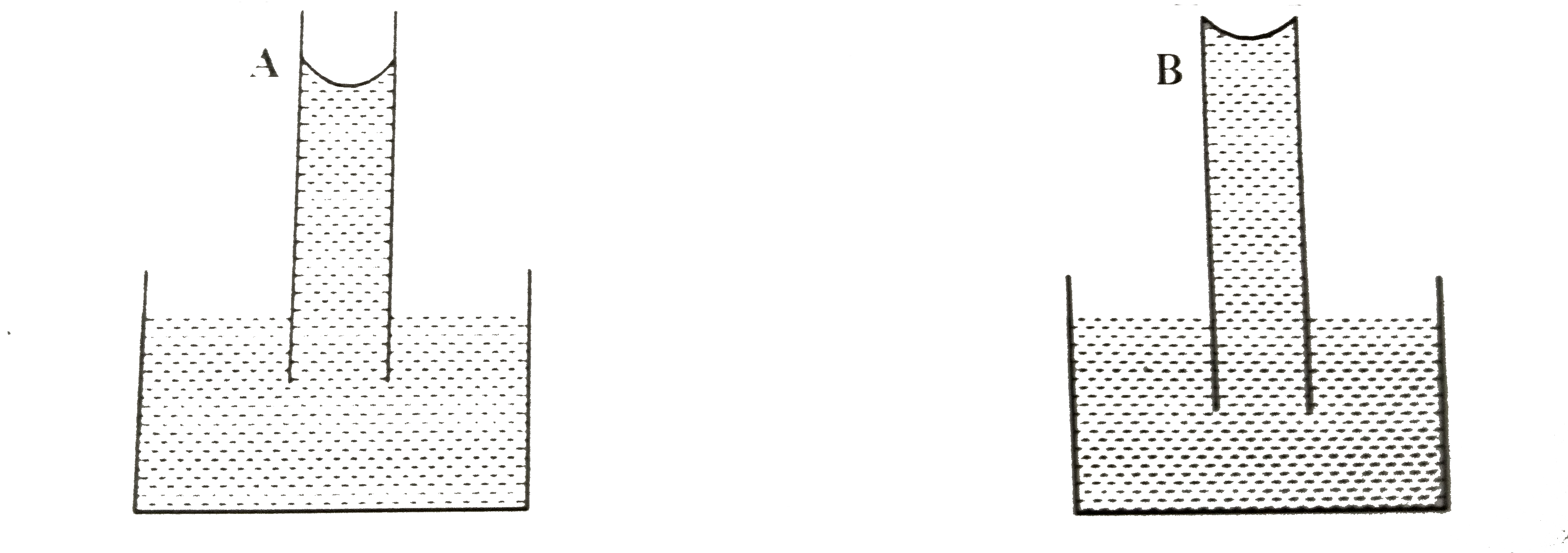
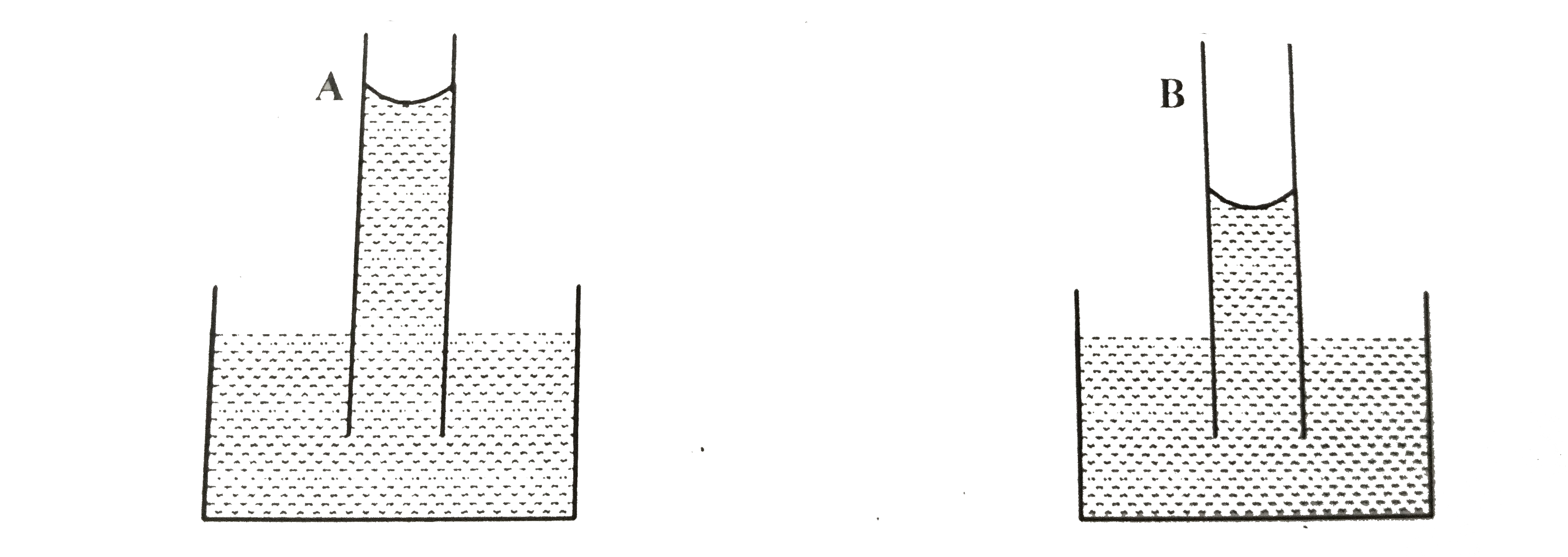
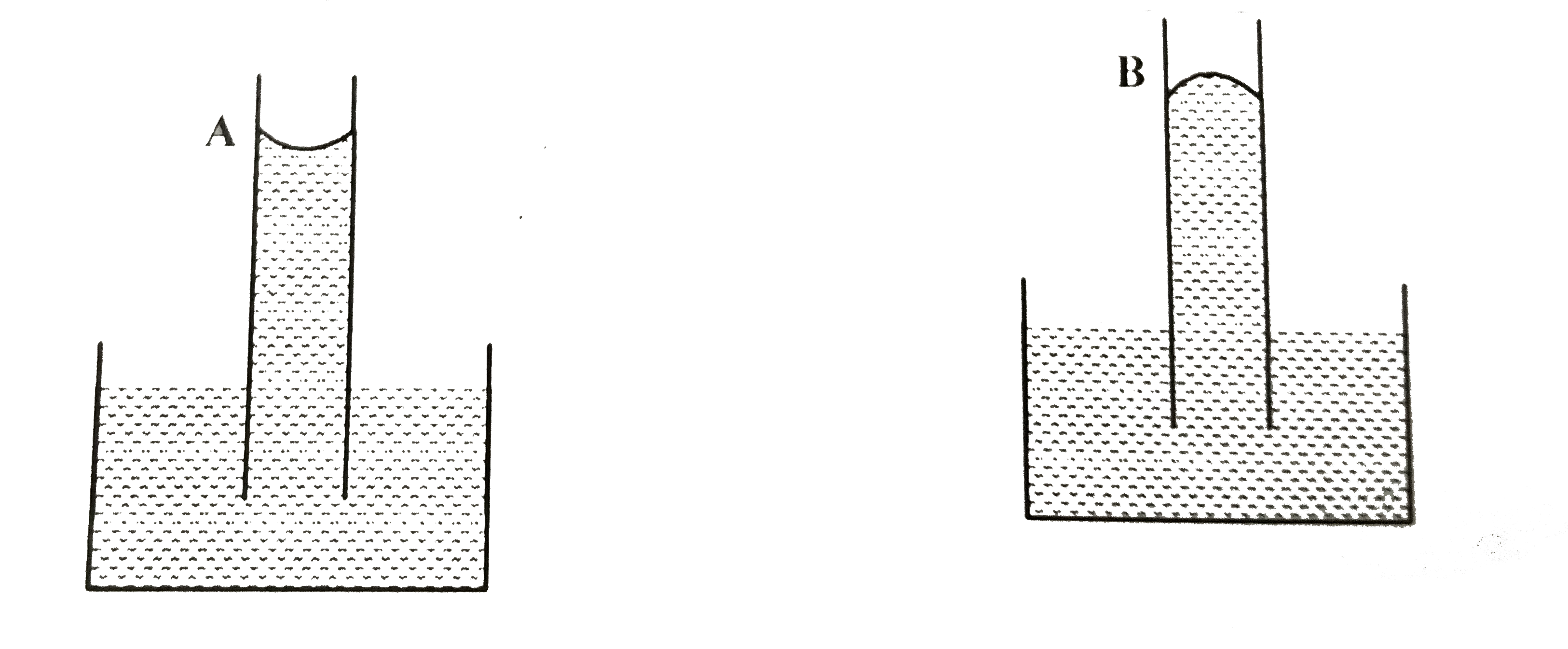
The correct Answer is:C
To solve the problem, we need to analyze the behavior of the liquid columns in two capillary tubes: one containing water and the other containing a soap-water solution.
1. Understanding Capillary Action:
Capillary action is the ability of a liquid to flow in narrow spaces without the assistance of external forces. This phenomenon occurs due to the cohesive and adhesive forces between the liquid molecules and the surface of the tube.
2. Identifying the Liquids:
We have two liquids:
- Tube A: Water
- Tube B: Soap-water solution
3. Surface Tension Comparison:
The surface tension (σ) of water is higher than that of a soap-water solution. This is crucial because the height to which a liquid rises in a capillary tube is directly related to its surface tension.
4. Capillary Rise Formula:
The height (h) to which a liquid rises in a capillary tube can be expressed by the formula:
h=4σcosθρgd
where:
- σ = surface tension of the liquid
- θ = contact angle (assumed to be similar for both liquids in this case)
- ρ = density of the liquid
- g = acceleration due to gravity
- d = diameter of the tube
5. Analyzing the Heights:
Since the surface tension of soap-water (σ_B) is less than that of water (σ_A), it follows that:
hB<hA
This means the height of the liquid column in tube B (soap-water solution) will be less than that in tube A (water).
6. Conclusion:
Based on the analysis, the liquid column in tube A (water) will be higher than that in tube B (soap-water solution). Therefore, the correct representation of the relative heights of the liquid columns in the two tubes is that the height in tube A is greater than the height in tube B.
Final Answer:
The correct option is the one that shows the height of the liquid column in tube A (water) being greater than that in tube B (soap-water solution).
---
Capillary action is the ability of a liquid to flow in narrow spaces without the assistance of external forces. This phenomenon occurs due to the cohesive and adhesive forces between the liquid molecules and the surface of the tube.
We have two liquids:
- Tube A: Water
- Tube B: Soap-water solution
The surface tension (σ) of water is higher than that of a soap-water solution. This is crucial because the height to which a liquid rises in a capillary tube is directly related to its surface tension.
The height (h) to which a liquid rises in a capillary tube can be expressed by the formula:
h=4σcosθρgd
where:
- σ = surface tension of the liquid
- θ = contact angle (assumed to be similar for both liquids in this case)
- ρ = density of the liquid
- g = acceleration due to gravity
- d = diameter of the tube
Since the surface tension of soap-water (σ_B) is less than that of water (σ_A), it follows that:
hB<hA
This means the height of the liquid column in tube B (soap-water solution) will be less than that in tube A (water).
Based on the analysis, the liquid column in tube A (water) will be higher than that in tube B (soap-water solution). Therefore, the correct representation of the relative heights of the liquid columns in the two tubes is that the height in tube A is greater than the height in tube B.
The correct option is the one that shows the height of the liquid column in tube A (water) being greater than that in tube B (soap-water solution).
Topper's Solved these Questions
Similar Questions
If the capillary tube is dipped in water is of insufficient length (l<h),will water overflow?
View SolutionFigure shows a capillary tube C dipped in a liquid that wets it. The liquid rises to a point A. If we blow air through the horizontal tube H, what will happen to the liquid column in the capillary tube?
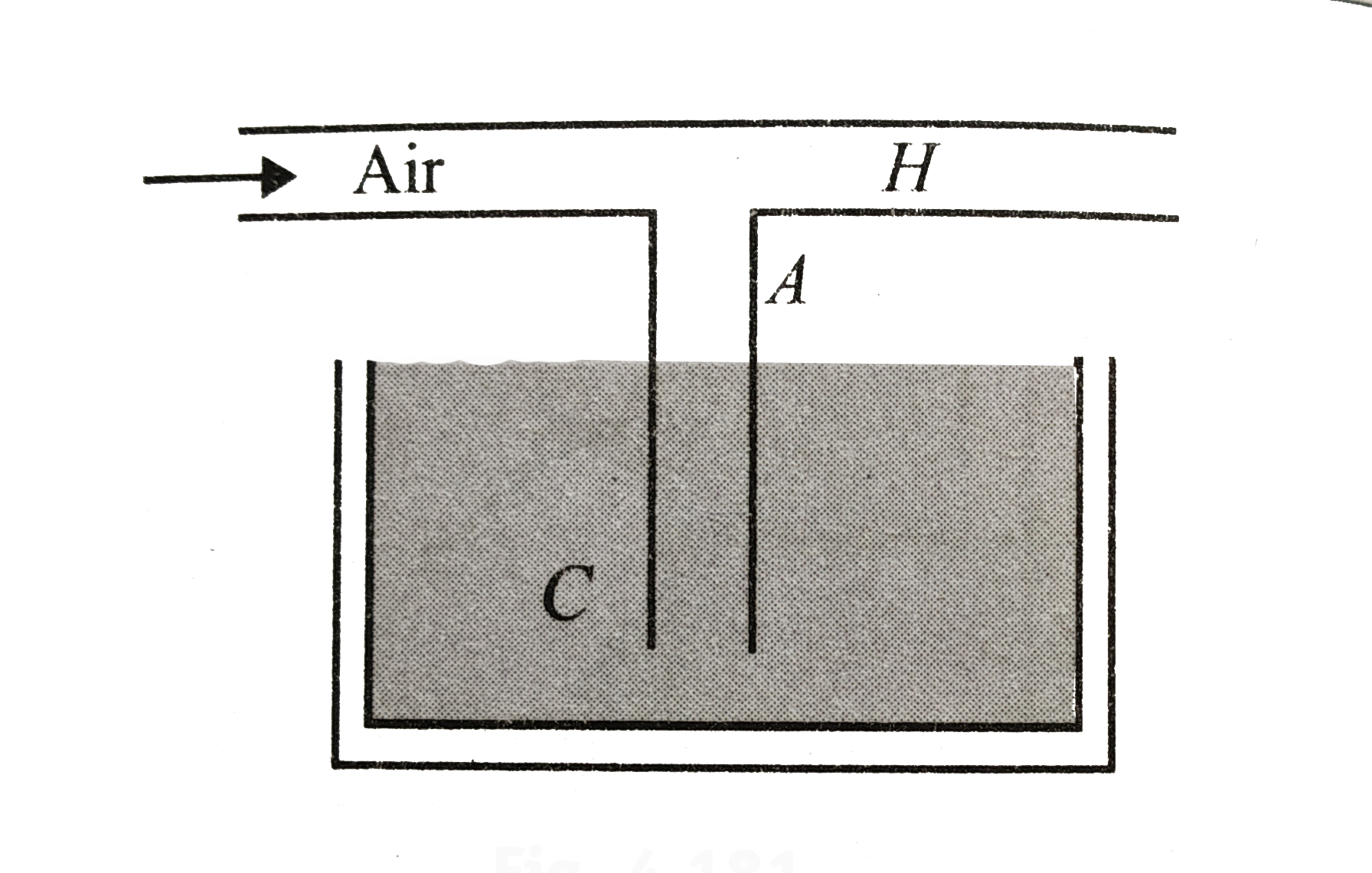
View SolutionA 20 cm long capillary tube is dipped in water. The water rises up to 8 cm. If the entire arrangement is put in a freely falling elevator, the length of water column in the capillary tube will be
View SolutionIf a wax coated capillary tube is dipped in water, then water in it will-
View SolutionA capillary tube is dipped in water to a depth and the water rises to a height h(<l) in the capillary tube. The lower end of the tube is closed in water by putting a lower over it. The tube is now taken out and the thumb is removed from the lower end and it kept open. The length of liquid column in the tube will be
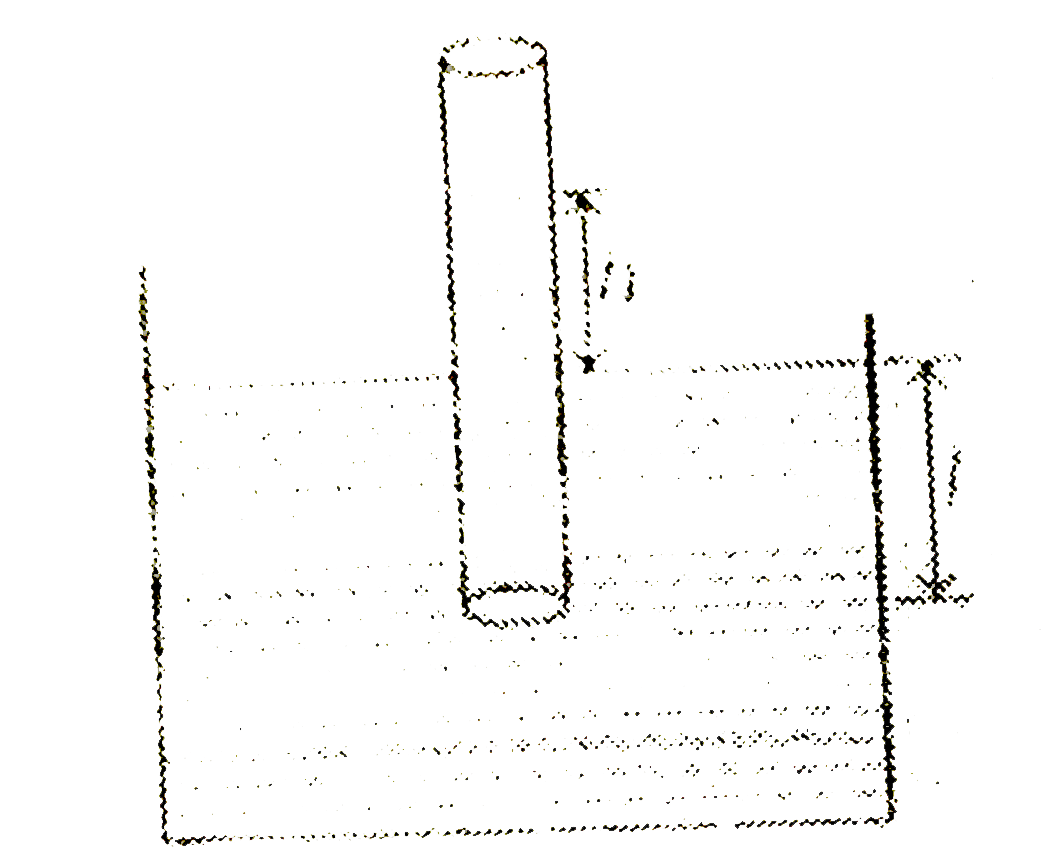
View SolutionThe lower end of a glass capillary tube is dipped in water. Water rises to a height of 9 cm. The tube is then broken at a height of 5 cm. The height of the water column and angle of contact will be
View SolutionA vertical glass capillary tube, open at both ends, contains some water. Which of the following shapes may not be taken by the water -in the tube?
View SolutionWhen a capillary tube is dipped into a liquid, the liquid neither rises nor falls in the capillary.
View SolutionA cylindrical tube open at both ends, has a fundamental frequency f in air. The tube is dipped vertically in air. The tube is dipped vertically in water so that half of it is in water. The fundamental frequency of the air column is now
View SolutionA capillary tube is dipped in water vertically. It is long enough for the water to rise to the maximum height h in the tube. The length of portion immersed in water is I<h. The lower end of the tube is closed and then the tube is taken out and opened again. Will all the water flow out of tube? Explain.
View Solution
